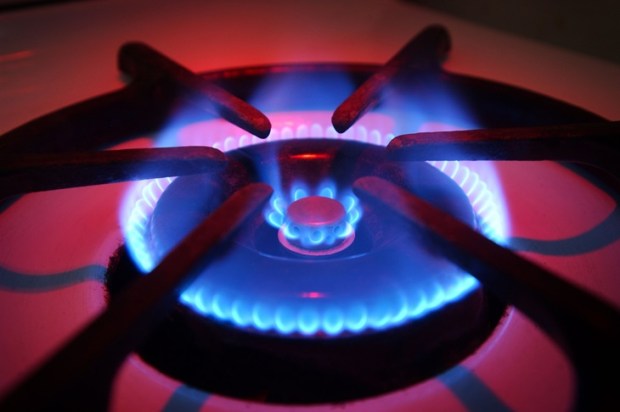A Jewish woman had two chickens. One got sick, so the woman made chicken soup out of the other one to help the sick one get well.
Henny Youngman
For as long as I can remember, I have heard the old chicken-wife’s tale that the best thing to do when you have a cold is to eat home-made chicken soup. Even though I am Italian-American, by birth, and Australian, by place, I always make chicken soup, with matzo balls, or kneidle, when I get a wog. Jewish penicillin.
I have always thought that the healing aspect of chicken soup was hokum and the real benefit was as a comfort food, something that gives one a sense of security, warmth and safety. Everyone has something different that serves as a comfort food. It usually goes back to whatever mama or grandma made that gave you a sense of well-being and home. For Italians: spaghetti and meatballs, or lasagna. For Greeks, moussaka. Aussies: a pie floater (ha ha – actually a pork roast with crackling).
But for Jews, it’s, classically, chicken soup.
A first-rate soup is more creative than a second-rate painting.
Abraham Maslow
When I discovered Vietnamese cooking, back in 1979, I found another miraculous soup that I began to turn to for comfort. Pho. I accidentally stumbled on it when I peered in the window of the only Vietnamese restaurant in Melbourne, at the time, on Victoria Street, Vao Doi, (which means New Beginning). Through the restaurant window, I saw what looked like small children’s crèche tables, low plastic stools, with a thermos bottle in the centre of each table. I wandered in one day to try it out for lunch. There was only one thing on the menu, a strange beef and flat rice noodle soup, with a salad of fresh herbs mounded on top it, called Pho, for only two dollars. I ordered one to experiment and got mightily addicted. I would go in just about every day for a cheap lunch. Vai Doi, and the entire Victoria Street Vietnamese community, continued to grow and prosper and today there are hundreds of restaurants serving Pho, even fast-food shops.
But I didn’t connect the dots between Vietnamese Pho and Jewish Chicken Soup until I traveled to North Vietnam a few years ago. I took a bus out to the remote market village of Can Cau where the Hmong tribe people would come down from the mountains and set up hundreds of tents. Every weekend a thriving food and craft market would appear out of nowhere and disappear just as quickly at the end of the day. There were dozens of Pho tents and every family had a gigantic pot on the fire, boiling beef ribs, home-made sausages, brisket and every manner of offal, for hours, to make the intensely rich broth that was the basis of the soup. Stacks of white bones piled up on the sides of the kitchen. Each tent had a slightly different variation of this classic Vietnamese street food.
Chicken soup and Pho became my two favourite comfort foods especially whenever I was feeling low or having cold symptoms.
Only recently did I discover that both of these soups share a common trait. They are both folk variants of bone broth.
I feed on good soup, not beautiful language.
Moliere
Bone broth differs from ordinary meat broth, which is a combination of meat and bones, boiled for 45 minutes, to two hours, and from Stock, which is simmered from between 4-5 hours, and used for sauces and gravies. Bone broth is made by boiling chicken, turkey, beef, pork or fish bones, for up to 24 hours, in order to extract, as much of the gelatin, from collagen-rich joints, and as many nutrients as possible from the marrow and the bones themselves. The meat is not that important. I cook my bones until they actually disintegrate. Then I strain the stock, let it sit overnight in the fridge and in the morning, ladle the solidified fat (with chicken bones, this is known as smaltz) to either use for matzo balls, or discard. Some people recommend stirring this fat back into the stock, as it contains many nutrients, but I personally find it too fatty.
Athletes swear by bone broth. Rebecca Mohning, a certified sports dietitian, for Expert Nutrition, who works with endurance athletes, says:
“It’s a nice way to rehydrate the body, because of the liquid, and then replenish the sodium — that electrolyte — that was lost through sweat during exercise. The amino acids may also provide the body with the building blocks it needs to rebuild muscle.”
Protein is one of the most obvious benefits, but also gelatin, which aids digestion, glycine, which helps secretion of gastric acids – and the synthesis of hemoglobin improves sleep, boosts memory and performance and proline which is beneficial for the skin. Bone broth contains the minerals calcium, magnesium, phosphorus, glucosamine and chondroitin, which can often relieve the effects of arthritis and joint pain. The geletan benefits ulcers and, besides collagen, the cartilage contains glycosaminoglycans, a deficiency in people with Crohn’s and ulcerative colitis. Helping to repair a compromised gut wall is another good reason to consume bone broth. Collagen-rich bone broth is good for your skin – adding chicken feet, animal joints, and knuckles to the broth increases the amount of collagen.
I imagine that making bone broth might sound pretty New Age to many but is simply a classic form of slow-cooking.
My good health is due to a soup made of white doves. It is simply wonderful as a tonic.
Chiang Kai-shek
Got something to add? Join the discussion and comment below.
Get 10 issues for just $10
Subscribe to The Spectator Australia today for the next 10 magazine issues, plus full online access, for just $10.

























Comments
Don't miss out
Join the conversation with other Spectator Australia readers. Subscribe to leave a comment.
SUBSCRIBEAlready a subscriber? Log in